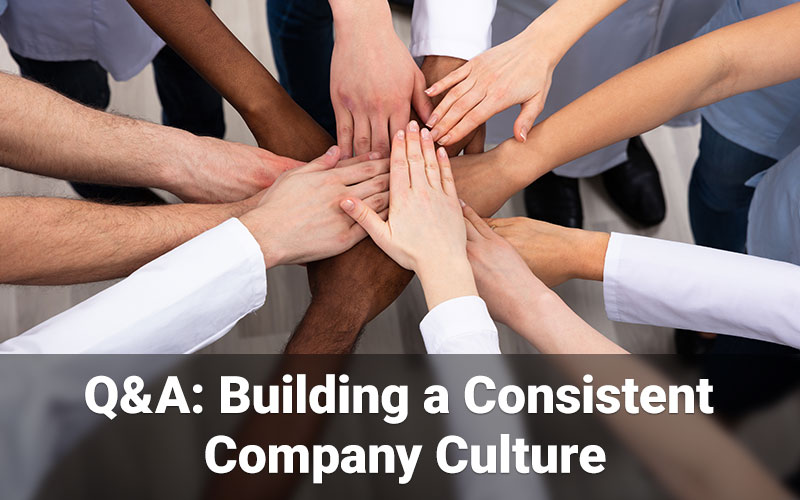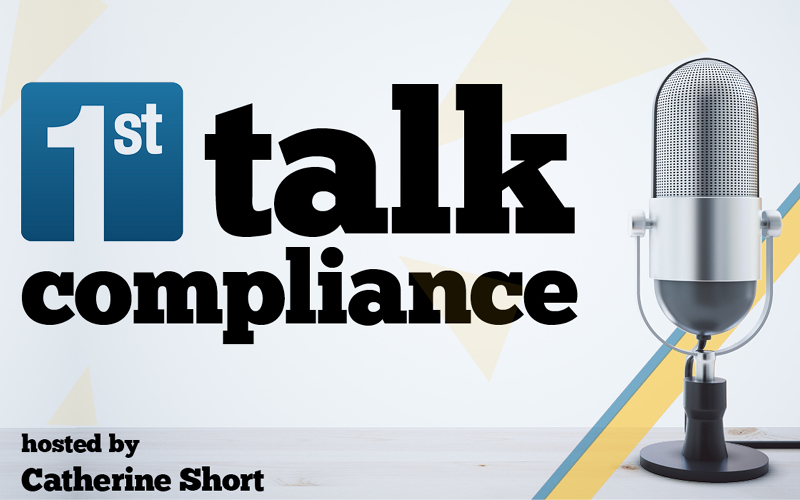Q&A: Building a Consistent Company Culture
 Warren Cook BS, MBA, MS, SHRM-certified of SymbianceHR, recently presented the webinar Event Planning and Building an Engaging Culture. Warren returned to answer many commonly asked questions on our blog in relation to company culture.
Warren Cook BS, MBA, MS, SHRM-certified of SymbianceHR, recently presented the webinar Event Planning and Building an Engaging Culture. Warren returned to answer many commonly asked questions on our blog in relation to company culture.
Every organization has a business or corporate culture. However, it often appears like the culture is inconsistent or challenging to maintain the way leadership desires. Why is that?
Many business leaders continue to ask me this question as they seek to overcome this workplace challenge. The primary cause for the inconsistency and the challenge is the ever-changing workforce as people come and go into the company. The secondary reason is the lack of demonstrated actions and behaviors of the leadership blended with the absence of accountability that erodes the desired culture and produces a new one.
That’s very interesting, perhaps not so obvious though for the leadership of a company. Explain the inconsistency challenge further and what leads to this problem.
The primary reason is the easier one to explain. Turnover or growth of an organization results in new employees with different perspectives, beliefs and workplace behaviors. Regardless of the work history of the employee, meaning first job or tenth job, the individual has learned how to be effective in how they perform tasks, communicate with others, solve problems, ask questions, etc. Infusing new people into an established group creates both a challenge and opportunity to educate and train on expectations and desired behaviors. However, many organizations have not established the necessary systems and practices to transfer the appropriate knowledge to new employees for a successful transition into the organization. This results in the inconsistent actions and behaviors disrupting or eroding the desired company culture.
That problem doesn’t sound like an easy one to fix. What do you recommend organizations do to overcome this challenge?
Of the two reasons I shared with you I have found it to be the easier problem to fix because it requires the establishment of effective human resource management practices during the talent acquisition process through orientation, onboarding and on the job training. Often neglected because the activities do not generate revenue, building a strong human resources infrastructure directly impacts the ability for a leadership team to establish, implement and sustain the culture they desire in the workplace. Development of robust recruiting and interview practices that then flow into orientation and onboarding that is executed consistently by trained professionals will ensure communication of the culture and will demonstrate the necessary behaviors for a new employee to adopt the culture effectively. Basically, you design an engaging program that models your expectations and encourages compliance to achieve success.
This sounds extremely comprehensive. You did mention a second reason, what can business leaders do to improve their organization’s culture?
The more difficult challenge to culture requires the members of the leadership team to be self-accountable in how they execute their duties for the company.
That appears to be a simple solution, why do you claim this is more challenging?
Because it requires leaders to look in the mirror and realize that often they are the problem and the actual cause of the failure in the culture.; their inability to demonstrate and model the necessary actions and behavioral norms for the workforce, to observe and follow results, in lack of trust and confidence in doing what is expected. Taking this further, leaders who fail to stay engaged with their staff and hold them accountable for demonstrating expected behaviors become part of the problem and not the solution. I often ask a CEO what their company culture is, then I ask the receptionist or a staff member the same question and almost 100% of the time the answers are drastically different. What the leader thinks the culture is versus the reality of what the workforce experiences is the challenge because it requires the leader to own the problem and be part of the solution. You cannot simply tell your management and workforce what the culture is, you need to model it, demonstrate it, and basically live it every day so others trust and believe in it and follow it. Easier said than done, however. If you want a consistent productive company culture that is sustainable the leadership must implement the necessary systems, programs and practices we discussed here today.
 Warren is the president and co-founder of SymbianceHR and provides strategic oversight for service delivery, business operations, and technical guidance on consulting engagements. He is a human resources subject matter expert with over 20 years of experience as a strategic business partner, project manager, and people leader across private and public sectors organizations.
Warren is the president and co-founder of SymbianceHR and provides strategic oversight for service delivery, business operations, and technical guidance on consulting engagements. He is a human resources subject matter expert with over 20 years of experience as a strategic business partner, project manager, and people leader across private and public sectors organizations.
Be sure to register for the webinar and check out our other HR resources, such as our online compliance training courses in the Basics of Family Medical Leave Act (FMLA) and Preventing and Addressing Workplace Harassment and Bullying. Be on the lookout for our upcoming radio show with Warren. And check out Warren’s other blog, Demonstrating the ROI of HR for your Business and webinar, Risk Management of Employment Practices, now on YouTube.







